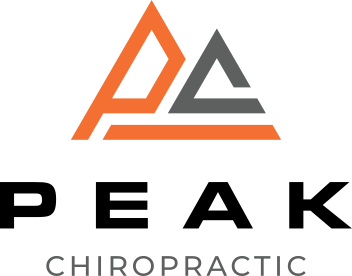If you're struggling with back pain, you're not alone, and finding effective relief is essential for your quality of life. You might want to explore a variety of techniques, from simple stretching exercises to professional treatment options. Understanding how each method can benefit you is key, and it's often a combination that yields the best results. So, what are the top five techniques that can help ease your discomfort and improve your daily activities? Let's take a closer look at how each approach can make a significant difference for you.
Stretching and Flexibility Exercises
When you incorporate stretching and flexibility exercises into your routine, you can considerably alleviate back pain and improve your overall mobility. Regular stretching helps to lengthen tight muscles, which can reduce tension and discomfort in your back.
It's crucial to focus on both the lower back and the surrounding areas, such as your hips and hamstrings, to promote a balanced and flexible body.
Start with gentle stretches like the cat-cow pose or child's pose to ease into your routine. These movements help increase blood flow and gently mobilize your spine. Holding each stretch for 15 to 30 seconds allows your muscles to relax and lengthen effectively.
As you progress, you can include more dynamic stretches, such as torso twists and standing quadriceps stretches, to enhance your range of motion.
Incorporating these exercises into your daily routine not only promotes flexibility but also helps improve your posture. Better posture can considerably relieve strain on your back, preventing further pain.
Aim to stretch for at least 10 to 15 minutes daily, focusing on areas that feel particularly tight or sore.
Consider yoga or Pilates classes, which emphasize stretching and flexibility. These practices not only boost your flexibility but also teach you mindful movement, further reducing the risk of injury.
Strengthening Core Muscles
Strengthening your core muscles is essential for relieving back pain and supporting your spine. A strong core stabilizes your body, reduces strain on your back, and improves your overall posture.
When your core is weak, other muscles must compensate, which can lead to discomfort and injury. So, let's focus on building that strength!
Here are three effective exercises to help you strengthen your core:
- Plank: Start in a push-up position, keeping your body in a straight line from head to heels. Engage your core and hold for 20-30 seconds. Gradually increase the duration as you build strength.
- Bridge: Lie on your back with knees bent and feet flat on the floor. Lift your hips towards the ceiling, squeezing your glutes and engaging your core. Hold for a few seconds before lowering back down. Repeat for 10-15 reps.
- Bird-Dog: Begin on all fours, with your hands under your shoulders and knees under your hips. Extend your right arm forward and your left leg back, keeping your body stable. Hold for a moment, then switch sides. Aim for 10 reps on each side.
Incorporating these exercises into your routine can markedly enhance your core strength and alleviate back pain.
Remember to maintain proper form and listen to your body. With consistency, you'll notice improvements in your stability, posture, and overall comfort.
Heat and Cold Therapy
Heat and cold therapy are powerful tools for managing back pain and promoting recovery. By understanding how to use these methods effectively, you can alleviate discomfort and speed up your healing process.
When you apply heat, it increases blood flow to the affected area, which helps relax tight muscles and soothe stiffness. You can use a heating pad, hot water bottle, or even take a warm bath. Just make sure you're not using heat for too long; aim for about 15-20 minutes at a time.
If your back pain is due to a muscle strain or injury, heat can be particularly beneficial after the initial inflammation has subsided.
On the other hand, cold therapy can be your go-to option for reducing inflammation and numbing sharp pain. Ice packs or cold compresses work wonders in the first 48 hours following an injury. Apply cold therapy for 15-20 minutes, allowing your skin to return to normal temperature between applications.
This method can help minimize swelling and provide a numbing effect that eases discomfort.
You can also alternate between heat and cold therapy. This combination can provide maximum relief, as heat helps with stiffness while cold addresses inflammation.
Always listen to your body and adjust your methods based on what feels best for you. With consistent use of heat and cold therapy, you'll likely find significant improvements in your back pain and overall mobility.
Mindfulness and Relaxation Techniques
Finding relief from back pain often goes beyond physical treatments like heat and cold therapy. Incorporating mindfulness and relaxation techniques into your routine can greatly enhance your overall well-being and help alleviate discomfort.
These practices not only promote relaxation but also empower you to manage pain more effectively. Here are three techniques you can try:
- Deep Breathing: Take a few minutes each day to focus on your breath. Inhale deeply through your nose, letting your abdomen expand, then exhale slowly through your mouth. This simple exercise can help reduce tension and lower stress levels, which might contribute to your back pain.
- Meditation: Set aside some quiet time to meditate. Find a comfortable position, close your eyes, and focus on your breath or a calming phrase. By training your mind to be present, you can cultivate a sense of peace that helps distract you from pain.
- Progressive Muscle Relaxation (PMR): This technique involves tensing and then relaxing different muscle groups in your body. Start with your feet and work your way up to your head. By focusing on the contrast between tension and relaxation, you'll develop a deeper awareness of where you hold stress, allowing you to release it more effectively.
Incorporating these mindfulness and relaxation techniques into your daily life can lead to a greater sense of control over your pain and a more balanced approach to managing back discomfort.
Professional Treatment Options
When back pain becomes persistent and affects your daily life, seeking professional treatment options can provide the relief you need. A healthcare provider can assess your condition and recommend a tailored approach to address your specific issues.
One of the most common routes is physical therapy. A licensed therapist will guide you through exercises designed to strengthen your back muscles, improve flexibility, and alleviate pain. They'll also teach you proper body mechanics to prevent future injuries.
Chiropractic care is another effective option. Chiropractors use manual manipulation techniques to realign your spine, which can relieve pressure on nerves and reduce pain. They may also provide advice on lifestyle changes, such as posture improvement and ergonomic adjustments.
If your pain is severe, your doctor might suggest medications. Over-the-counter pain relievers like ibuprofen or acetaminophen can help, but in some cases, prescription medications or muscle relaxants may be necessary.
In more complex situations, interventional procedures, such as corticosteroid injections or nerve blocks, can offer significant relief. These treatments target specific pain points and can provide temporary respite, allowing you to engage in rehabilitation activities more effectively.
Lastly, if conservative treatments aren't effective, surgical options may be explored. Procedures like discectomy or spinal fusion can address structural issues in your spine.
Always consult a specialist to discuss the risks and benefits of any procedure, ensuring you make informed decisions about your health.
Conclusion
Incorporating these five techniques into your routine can greatly alleviate back pain and improve your overall well-being. By regularly stretching, strengthening your core, and using heat or cold therapy, you can enhance your mobility and comfort. Don't forget the power of mindfulness to manage pain effectively. If your pain persists, seeking professional help is a smart move. Remember, taking proactive steps today can lead to a healthier, pain-free tomorrow.



